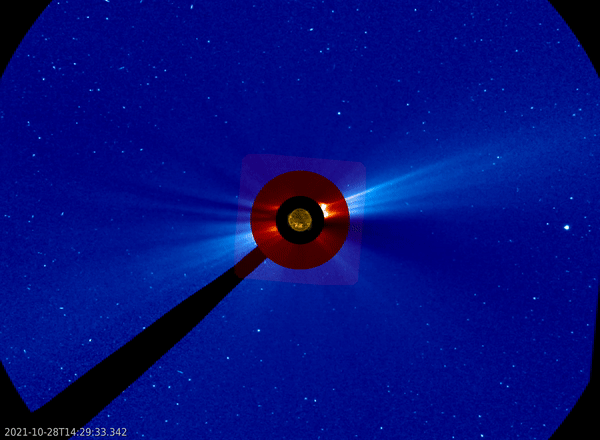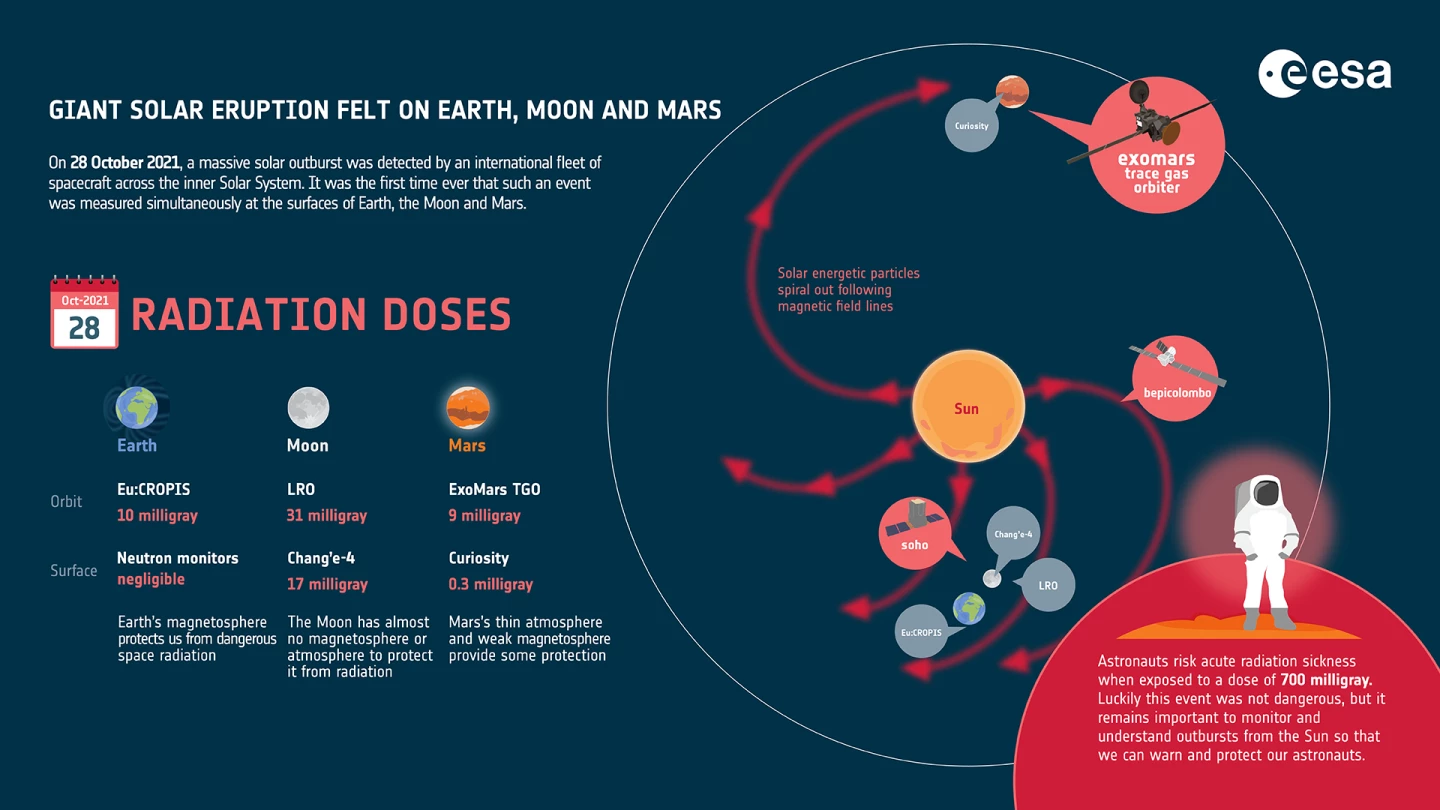In a scary first, scientists have discovered a 2021 solar eruption so large that it was, for the first time, detected simultaneously on Earth, the Moon, and Mars, highlighting the radiation dangers posed by such events to deep space travelers.
We're so used to our human scale of things that it's sometimes difficult to grasp just how huge and powerful the forces of nature routinely are. On October 28, 2021, a coronal mass ejected from the Sun was so large and energetic that it's hard to describe in everyday terms. In this case, the mass of gas, plasma, and energetic particles was so massive that it spread across a wide swatch of the inner solar system from Earth to Mars, which on that day was 250 million km (155 million miles) from our planet.
According to ESA, the eruption was detected by a fleet of spacecraft, including the ExoMars Trace Gas Orbiter (TGO), Curiosity Mars rover, Chang’e-4 Moon lander, Lunar Reconnaissance Orbiter (LRO), CROPIS Earth orbiter, the Solar Orbiter, SOHO, and BepiColombo.
The event was so powerful that it also managed to penetrate the Earth's magnetic field and was detected on the Earth's surface in what is called a "ground level enhancement." This sort of thing is comparatively rare with only 73 encountered since observations began in the 1940s.

Scientists are extremely interested in events like this because of plans for crewed deep space missions to the Moon and Mars. Outside of the Earth's atmosphere and strong magnetic field, astronauts are vulnerable to the radiation released by solar flares and coronal eruptions. These so-called 'radiation storms' can produce radiation dosages strong enough to kill a human within a couple of weeks after exposure. One such eruption occurred in August 1972 but, fortunately, it came between the US Apollo 16 and 17 missions, so no harm was done.
However, in future, deep space missions will depend on monitoring networks to warn them of dangerous solar activity and spacecraft will need to be equipped with shielded radiation shelters where astronauts can evacuate to. Even on the relatively well protected International Space Station, the sleeping quarters and kitchen have especially thick walls in case of radiation emergencies.

This event illustrates not only the hazards to space travelers, but to the people left home back on Earth. If the flare had been pointing directly at Earth, it might have resulted in effects similar to the Carrington Event, which occurred in 1859. This powerful eruption hit the Earth dead on and not only caused spectacular auroras, but produced an electromagnetic storm that damaged the world's telegraph network and even caused fires in telegraph stations.
If that could happen with a system as primitive as telegraph wires, imagine what it could do to today's continent-spanning power grids and global communication networks. Small wonder that there are calls to shield and harden the vulnerable points.
"Our calculations of the past ground level enhancement events show that on average one event every 5.5 years may have exceeded the safe dose level on the Moon if no radiation protection had been provided. Understanding these events is crucial for future crewed missions to the surface of the Moon," said scientist Jingnan Guo who researched the 28 October event.
The study of the solar eruption was published in Geophysical Research Letters.
Source: ESA






